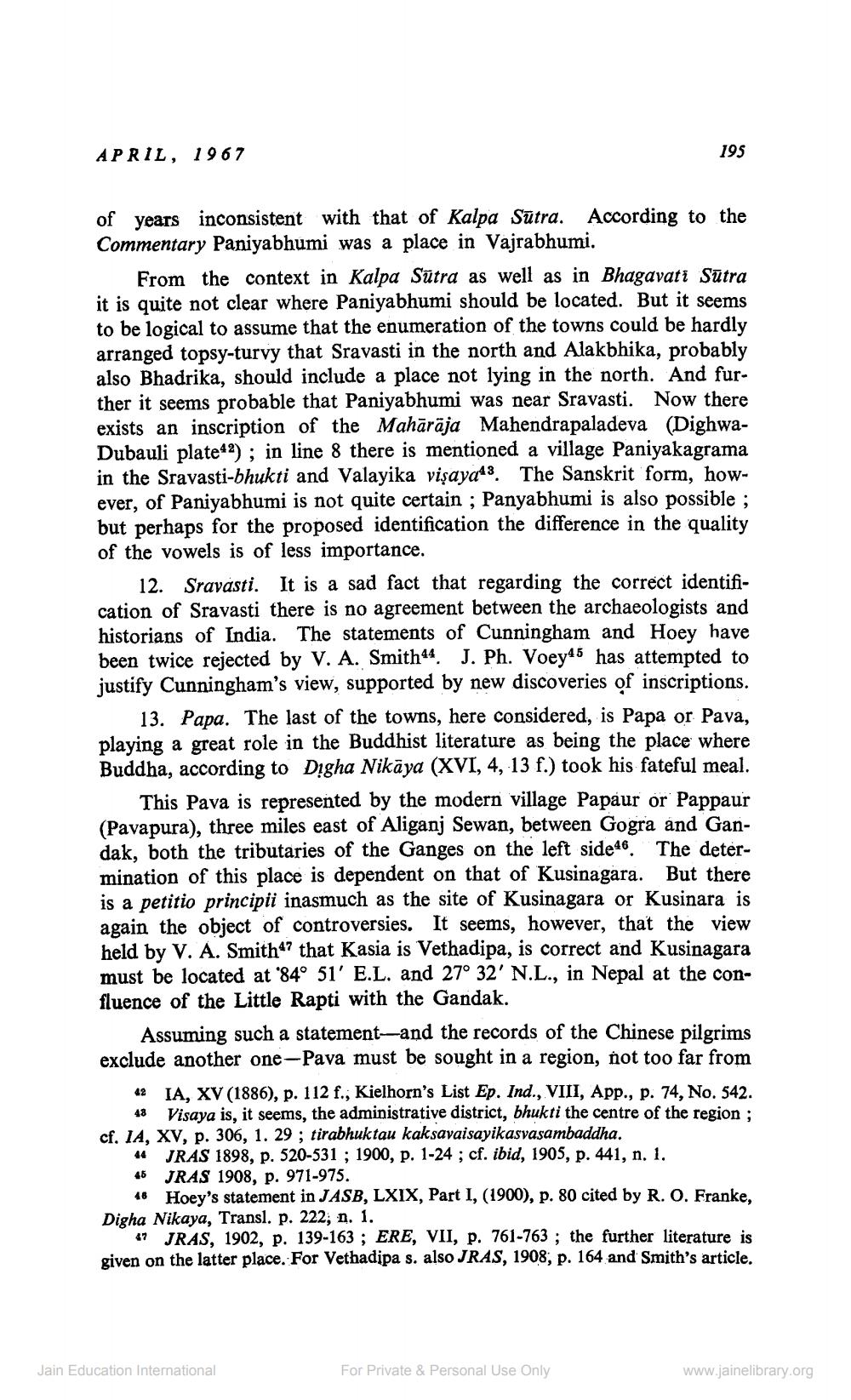________________
APRIL, 1967
195
of years inconsistent with that of Kalpa Sutra. According to the Commentary Paniyabhumi was a place in Vajrabhumi.
From the context in Kalpa Sutra as well as in Bhagavati Sutra it is quite not clear where Paniyabhumi should be located. But it seems to be logical to assume that the enumeration of the towns could be hardly arranged topsy-turvy that Sravasti in the north and Alakbhika, probably also Bhadrika, should include a place not lying in the north. And further it seems probable that Paniyabhumi was near Sravasti. Now there exists an inscription of the Mahārāja Mahendrapaladeva (DighwaDubauli plate42); in line 8 there is mentioned a village Paniyakagrama in the Sravasti-bhukti and Valayika vişaya43. The Sanskrit form, however, of Paniyabhumi is not quite certain ; Panyabhumi is also possible ; but perhaps for the proposed identification the difference in the quality of the vowels is of less importance.
12. Sravasti. It is a sad fact that regarding the correct identification of Sravasti there is no agreement between the archaeologists and historians of India. The statements of Cunningham and Hoey have been twice rejected by V. A. Smith44, J. Ph. Voey45 has attempted to justify Cunningham's view, supported by new discoveries of inscriptions.
13. Papa. The last of the towns, here considered, is Papa or Pava, playing a great role in the Buddhist literature as being the place where Buddha, according to Digha Nikāya (XVI, 4, 13 f.) took his fateful meal.
This Pava is represented by the modern village Papaur or Pappaur (Pavapura), three miles east of Aliganj Sewan, between Gogra and Gandak, both the tributaries of the Ganges on the left side 46. The determination of this place is dependent on that of Kusinagara. But there is a petitio principii inasmuch as the site of Kusinagara or Kusinara is again the object of controversies. It seems, however, that the view held by V. A. Smith47 that Kasia is Vethadipa, is correct and Kusinagara must be located at 84° 51' E.L. and 27° 32' N.L., in Nepal at the confluence of the Little Rapti with the Gandak
Assuming such a statement--and the records of the Chinese pilgrims exclude another one-Pava must be sought in a region, not too far from
42 IA. XV (1886), p. 112 f., Kielhorn's List Ep. Ind., VIII, App., p. 74, No. 542.
48 Visaya is, it seems, the administrative district, bhukti the centre of the region ; cf. IA, XV, p. 306, 1. 29; tirabhuktau kaksavaisayikasvasambaddha.
44 TRAS 1898, p. 520-531 ; 1900, p. 1-24; cf. ibid, 1905, p. 441, n. 1. 46 JRAS 1908, p. 971-975.
48 Hoey's statement in JASB, LXIX, Part I, (1900), p. 80 cited by R. O. Franke. Digha Nikaya, Transl. p. 222, n. 1.
47 JRAS, 1902, p. 139-163 ; ERE, VII, p. 761-763; the further literature is given on the latter place. For Vethadipa s. also JRAS, 1908, p. 164 and Smith's article.
Jain Education International
For Private & Personal Use Only
www.jainelibrary.org




